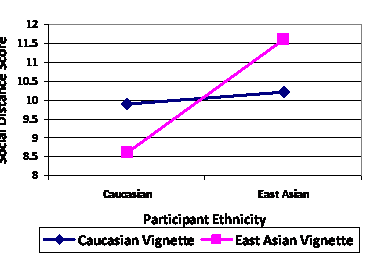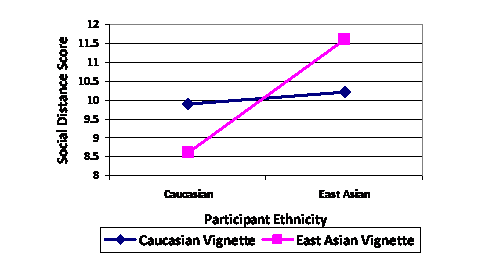Recent research suggests that a small minority of people who have gambling problems ever seek treatment for those problems (Slutske, 2006). One reason for failing to seek treatment might be the stigma attached to mental health problems, particularly problems with addiction. This week, The WAGER reviews a study that examined whether culture plays a role in the stigma attached to gambling problems and treatment (Dhillon, Horch, Hodgins, 2011).
Method
- Participants were students of East Asian and Caucasian ancestry recruited from the University of Calgary through the Psychology Department Research Participation System (n=64 and n=50, respectively).
- Researchers gave participants questionnaire packets containing vignettes describing either an East Asian or a Caucasian problem gambler. The vignettes differed only by the depicted individual’s ethnicity.
- The questionnaire packets also contained additional assessments including Attitudinal Social Distance.
- The social distance measure used in this study indicates willingness to interact with problem gamblers (higher social distance score indicate less willingness) and is a good indicator of stigma. The questions used were modified to relate to gambling issues.
Results
- Mean social distance reported by East Asians was higher than that reported by Caucasians (M = 10.9, SD = 3.6 vs. M = 9.2, SD = 3.1; F[1,106] = 8.46, p < .05).
- Social distance score did not differ significantly by the ethnicity of the problem gambler described in the vignette (F(1,106) = 0.24, p = ns).
- As displayed in Figure 1, there was a significant interaction between participant ethnicity and the ethnicity of the problem gambler described in the vignette (F(1, 106) = 4.20, p < .05)
- East Asians participants preferred more social distance from the East Asian problem gambler depicted in the vignette than Caucasian participants, but participants did not differ in terms of the distance they preferred from the Caucasian problem gambler.
Figure 1. Interaction between participant ethnicity and vignette ethnicity on social distancing (adapted from Dhillon et al., 2011).
Limitations
- The sample consisted only of university students
- East Asian university students might be more acculturated than other East Asian individuals
- Only East Asian cultures and Caucasians were investigated
- Additionally, individuals of all East Asian cultures were grouped into a single category
- The use of social distance as a measure of stigma can be affected by social desirability bias and it is hard to determine if an individual’s questionnaire responses reflect their actual behavior.
- The study does not examine how stigma affects treatment seeking.
Conclusion
The results from this study indicate that East Asians might experience more stigmatization of problem gambling than Caucasians, particularly from other East Asians. This suggests that culture might pose a significant barrier to treatment. Future research needs to investigate the specific beliefs about gambling and mental health that underlie these cultural differences.
-Jed Jeng
What do you think? Please use the comment link below to provide feedback on this article.
References
Dhillon, J., Horch, J., & Hodgins, D. C. (2011). Cultural Influences on Stigmatization of Problem Gambling: East Asian and Caucasian Canadians. Journal of Gambling Studies, 27(4), 633-647.
Slutske, W. S. (2006). Natural Recovery and Treatment-Seeking in Pathological Gambling: Results of Two U.S. National Surveys. The American Journal of Psychiatry, 163(2), 297-302.





